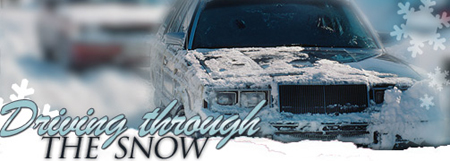 Winter
Driving Tips for those Snowy Conditions
As
old man winter sets in, the roads becomes a treacherous place for both driver
and vehicle. Heavy rains, snow, sleet and ice can create unsafe driving conditions
for those frequently travelled roadways. These snowy conditions can often catch
drivers off-guard, causing dangerous accidents. However, according to automotive
journalist Lauren Fix, snowy conditions can be managed with safe driving and by
following these important winter driving tips. Adjust
your speed for current conditions. Slow down when driving during challenging
conditions such as winter weather. Decreasing your speed will allow you more time
to respond should a difficult situation occur. Anticipate
dangerous situations. Many studies have shown that up to 80 percent
of all auto accidents could be prevented with one more second of additional reaction
time. Drivers can gain this one second by ensuring they look far enough ahead
of their vehicle while driving. This will be helpful in identifying any potentional
problems. Use
tire grip effectively. When the road you are traveling on is slippery,
always brake in a straight line before any curve in the road. Taking your foot
off the brake before steering into a curve allows you to use the entire grip available
for steering. However, do not accelerate until the steering wheel is straight. Drive
with your head lights. Whenever daytime visibility is less than clear,
be sure to turn on your head lights so other driver's can see your vehicle. Remember
this rule of thumb — if you are using your wipers, you should be using your
lights. Also, when traveling in snowy conditions remember to regularly clear snow
from tail lights, turn signal lights and headlamps. Don't
depend on anti-lock brakes. Although anti-lock braking systems (ABS)
offer the ability to brake and steer, they are still limited by the grip available
on the road and your vehicle's tires. Even ABS won't keep you on the road if you
are driving too fast into a curve while trying to brake. Use
caution when driving at night. Always leave headlamps on low beam when
you are driving through snow or fog. This helps minimize reflection and glare,
improve visibility and reduce eye fatigue. Wear
quality sunglasses. Quality sunglasses can help highlight changes in
the driving terrain and road surfaces, even during low visibility conditions.
The best choice for winter driving is polarized lenses. Start
the winter off right by reviewing and following these simple winter driving guidelines
and prepare for the slippery road conditions that may lie ahead. Learn
more about winter driving... Essential
Winter Emergency Kit
Winter
Driving School
Snowy
Tire Testing Source
— Lauren Fix
|